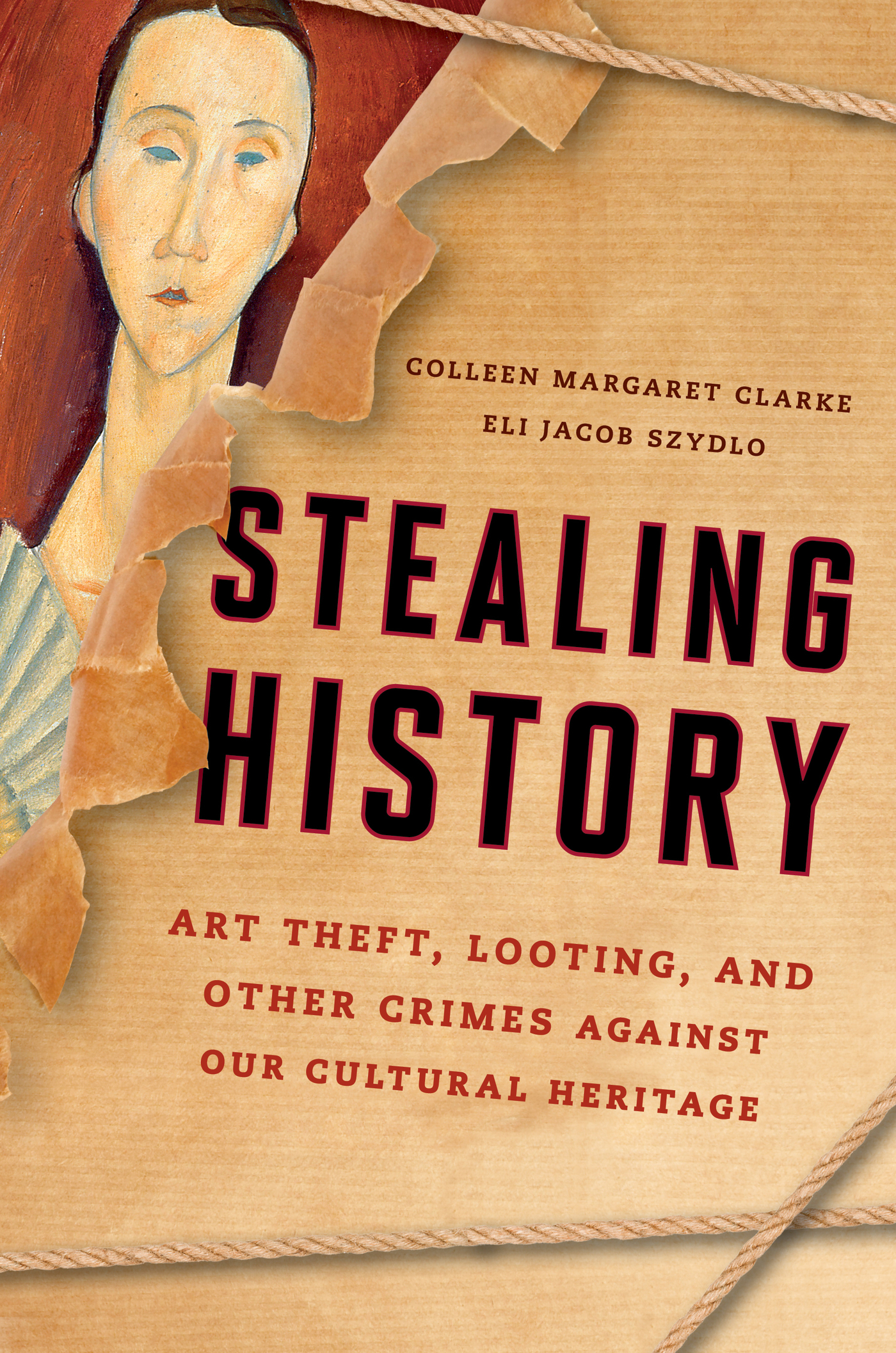Stealing History
Stealing History
Art Theft, Looting, and Other Crimes Against Our Cultural Heritage
Colleen Margaret Clarke and
Eli Jacob Szydlo
ROWMAN & LITTLEFIELD
Lanham Boulder New York London
Published by Rowman & Littlefield
A wholly owned subsidiary of The Rowman & Littlefield Publishing Group, Inc.
4501 Forbes Boulevard, Suite 200, Lanham, Maryland 20706
www.rowman.com
Unit A, Whitacre Mews, 26-34 Stannary Street, London SE11 4AB
Copyright 2017 by Rowman & Littlefield
All rights reserved. No part of this book may be reproduced in any form or by any electronic or mechanical means, including information storage and retrieval systems, without written permission from the publisher, except by a reviewer who may quote passages in a review.
British Library Cataloguing in Publication Information Available
Names: Clarke, Colleen Margaret, 1955 author. | Szydlo, Eli Jacob, author.
Title: Stealing history : a deeper understanding to art and cultural crimes / Colleen Margaret Clarke and Eli Jacob Szydlo.
Lanham, Maryland : Rowman & Littlefield, 2017. | Includes bibliographical references and index.
Identifiers: LCCN 2016041761 | ISBN 9781442260795 (cloth : alk. paper)
Subjects: LCSH: Art thefts. | ArtForgeries. | ArtMutilation, defacement, etc. | Cultural propertyProtection.
Classification: LCC N8795 .C59 2017 | DDC 364.16/287dc23 LC record available at https://lccn.loc.gov/2016041761
 TM The paper used in this publication meets the minimum requirements of American National Standard for Information Sciences Permanence of Paper for Printed Library Materials, ANSI/NISO Z39.48-1992.
TM The paper used in this publication meets the minimum requirements of American National Standard for Information Sciences Permanence of Paper for Printed Library Materials, ANSI/NISO Z39.48-1992.
Printed in the United States of America
Introduction
While relaxing and watching television or movies, most of us have seen shows like White Collar or movies such as The Thomas Crown Affair or The Italian Job and To Catch a Thief. This entertainment shows the classical archetype of the romanticized thief, the modern anti-hero, or the character of the bored art lover with too much time and money on his or her hands. These characters steal artwork as a representation of their love of art, the thrill of the chase, or simply to teach a lesson to the upscale museum curator.
These characters wear the finest suits, have perfectly combed hair, and know everything there is to know about the art, history, and artists whose work they are stealing. Their thefts are conducted carefully and planned to a T, with a little flair thrown in just to add insult to injury. This is usually directed toward the museum or private owner from whom they are stealing. The artwork is always treated carefully, never harmed, and often copied and described by the thief in articulate and loving detail. Due to the disingenuous portrayal of art crime in the entertainment industry, the general public is often misled on the subject of art crimes. However, by comparison to other crimes, why shouldnt art crime be presented in the context of amusement in the entertainment industry?
To the majority of the public, art is not important when compared to terrorism, drug abuse, and crimes directed at people, such as murder, rape, or kidnappings. Violent crime is far more prevalent and holds a higher priority in our society. Generally, people erroneously believe that art crimes and cultural crimes do not actually damage anyone in a direct way.
So why is art important? Art is an emotional connection to our cultural history and the artists interpretation of specific events that created that same history. Art complements the literature and descriptions of events that are found in history. This creates a contrast from the classroom lecture by offering a permanent association to a primary source of events through the eyes of the artists living at that time. Fred S. Kleiner, in Gardners Art through the Ages, states that people cannot see or touch historys vanished human events, but a visible, tangible artwork is a kind of persisting event. This book is meant to offer the reader an in-depth overview of the subject matter of art and cultural crimes, and the policing thereof, primarily within the United States.
The image of art crime that Hollywood provides does not depict the disturbing emotions viewers experience when they view the empty frames displayed on the walls of the Isabella Stewart Gardner Museum in Boston, Massachusetts. Another infamous illustration of cultural carnage is the missing artwork from the destruction the Nazis wrought against countless cultures during World War II. The sad reality is that portions of the art stolen by the Nazi Regime have never been recovered, and are presumed destroyed.
The cultural destruction and neglect that is prevalent in American society is another issue that is closely associated with art crimes. The destruction and smuggling of Native American artifacts from North America is a loss of history that will never be replaced. The African American population is recognized for its accomplishments, and the events recorded as the Harlem Renaissance, yet so few Americans have heard of the movement. This begs the question, how do we in the United States regard our own culture and art works? Why is there a lack of recognition toward Mexican American, Asian American, and Native American artists, let alone countless other cultures that have contributed to the cultural identity of the United States?
Authors studying the field of art crime are writing about the dire and disturbing rate at which the illegal market has grown in popularity over the last half century. This is not just solely a historical issue because the advancement of modern technology and security has not kept pace. Technology, as well, has not allowed for close and personal inspection while maintaining the security and safety of the items. The museums maintain a difficult balance: they have to offer easy public access while maintaining the proper protection and security for the artifacts stored within. In many cases the financial backing does not allow for advanced types of security, and it is often overlooked in order to create a memorable and inviting gallery.
With hundreds of years of history represented by these exhibited and stored artifactswhich are constantly on display wherever you gocountries in Europe take the issue of art crime very seriously. Artists and art historians, many from the United States, flock to Europe in order to further study these works of art. In comparison many American cities lack a great deal of the cultural identity that is present within Europe. Art crime is a type of class warfare; the theft of highly priced and well-known artwork garners little to no sympathy from those of the middle to lower classes who ask, How does that affect me?
The United States is the largest market for both legal and illicit artworks in the world, yet the FBI employs a minimal number of agents to investigate the most detrimental art crimes. On the other hand, Italy, a country with an extremely high rate of art crime, and a longstanding cultural history, employs hundreds of investigators primarily for art crimes. The cultural difference and reverence to art can be viewed and better understood when one considers how seriously that country takes the crimes of art and culture. Many European countries, having thousands of years of history, appear to value the arts more than the United States, a significantly younger country and culture by comparison.
Next page
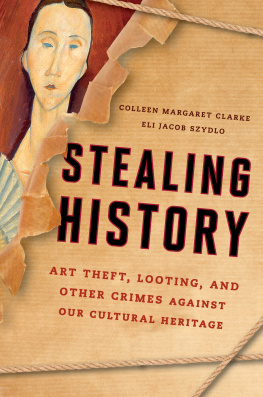

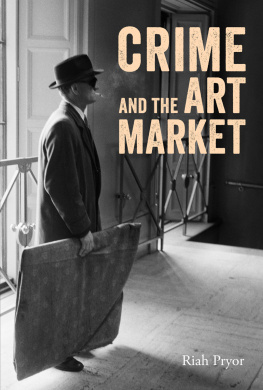

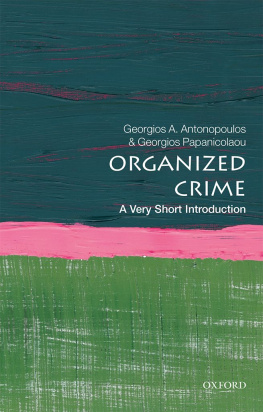
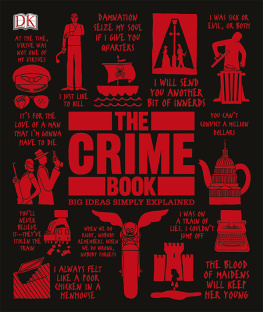
 TM The paper used in this publication meets the minimum requirements of American National Standard for Information Sciences Permanence of Paper for Printed Library Materials, ANSI/NISO Z39.48-1992.
TM The paper used in this publication meets the minimum requirements of American National Standard for Information Sciences Permanence of Paper for Printed Library Materials, ANSI/NISO Z39.48-1992.